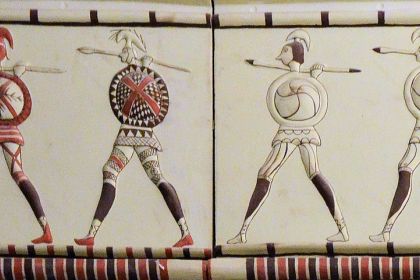Nature Sounds
Classical music examples imitating bees and buzzing insects

Bees
The seemingly monotonous buzz that bees emit is a developed communicative function allowing these social insects to organize colonies. Being familiar with a variety of buzzing patterns, beekeepers distinguish the sounds of healthy or unwell bees. People also capable to understand some communications inside the hive by discerning such signals as hunger, predators attacking, and swarm departure.
Using various buzz patterns combined with cyclic movements known as waggle dance, successful bee foragers can share information about the direction and distance to flowers, water sources, or to new nest-site locations with other members of the colony. Another important buzzing function is to assist with pollination which is done when flying insects produce buzzing sounds strong enough to shake the pollen firmly held by the anthers so it can be gathered.
Like bird songs and chorusing insects, the buzz was constantly imitated by classical composers of all music eras. One of the most obvious composing methods inspired by buzzing insects is a drone—a harmonic effect where just one note or a chord is sound continuously throughout a piece.
Listen to Buzzing bees on the flowering plum soundscape where the insect droning sound is accompanied by bird songs:
Download HQ soundscapes recorded in a mixed forest, including bird songs, cricket choruses, and night or afternoon thunderstorms for free.
The song Where the Bee Sucks written by Elliot Goldenthal for the 2010 film The Tempest is a typical example of using a drone or organ point, as it is called in musical theory. As an effective support for vocals, the droning sound that imitates the buzzing bees is performed here by strings and is clearly audible throughout the song.
Listen to Where the Bee Sucks by Elliot Goldenthal:
Another way of depicting bees through instrumental music is the high-speed melodic passages performed mainly on bowed string instruments since physical parameters of the sound extracted by bow have the same nature as buzzing. One of the most fascinating violin melodies imitating a bee was written by the German composer of the Romantic period François Schubert. His bagatelle, simply entitled The Bee, is often misattributed to Franz Schubert due to the similarity of the two men's names.
Listen to Francois Schubert's L'abeille (The Bee) performed by Jaime Laredo and Margo Garrett:
Perhaps the most famous work of classical music imitating insects is the orchestral interlude Flight of the Bumblebee by the Russian composer Nikolai Rimsky-Korsakov written for his opera The Tale of Tsar Saltan which is based on the verses by Alexander Pushkin. Since its publication in 1900, the piece has become a kind of standard for solo performance by those violinists who seek to demonstrate their virtuosity.
Listen to Nikolai Rimsky-Korsakov's The Flight of the Bumblebee performed by Yehudi Menuhin and Gerald Moore:
Of course, composers write bee-inspired pieces not only for bowed instruments. One noteworthy example imitating the insect buzz is shown in the piano Etude in F Minor The Bees written by Frederic Chopin with the aim of developing high-speed performance skills for keyboardists. However, this undoubtedly virtuoso work is poorly associated with bees due to the jerky piano sound that is made when a hammer connects with a string.
Listen to Chopin's The Bees performed by Arthur Rubinstein:
Curiously, at the end of the 19th century, the mentioned works were singled out in a separate musical genre called perpetuum mobile which includes compositions that are characterized by a continuous stream of notes that are played with a rapid tempo in a repetitive fashion.



